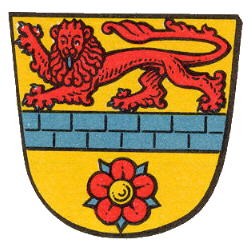Neuweilnau: Difference between revisions
Knorrepoes (talk | contribs) m (Text replace - "'''Origin/meaning :'''<br/>" to "====Origin/meaning====") |
Knorrepoes (talk | contribs) m (Text replace - "|width="15%"|50 px|right |}" to "|width="15%"|50 px|right |}<seo title="Wappen, Gemeindewappen" />") |
||
| Line 3: | Line 3: | ||
|width="70%" align="center" |'''Heraldry of the World<br/>Civic heraldry of [[Germany]] - [[Deutsche Wappen|Deutsche Wappen (Gemeindewappen/Kreiswappen)]]''' | |width="70%" align="center" |'''Heraldry of the World<br/>Civic heraldry of [[Germany]] - [[Deutsche Wappen|Deutsche Wappen (Gemeindewappen/Kreiswappen)]]''' | ||
|width="15%"|[[File:Germany.jpg|50 px|right]] | |width="15%"|[[File:Germany.jpg|50 px|right]] | ||
|} | |}<seo title="Wappen, Gemeindewappen" /> | ||
Revision as of 18:11, 5 November 2012
| Heraldry of the World Civic heraldry of Germany - Deutsche Wappen (Gemeindewappen/Kreiswappen) |
NEUWEILNAU
State : Hessen
District (Kreis) : Hochtaunuskreis (until 1975 Usingen)
Incorporated into : 1972 Weilrod
Origin/meaning
The arms were officially granted on January ??, 1953.
The arms are based on the old seal of Neuweilnau known from 1774. The red lion is taken from the arms of the Counts of Weilnau. The rose and the wall are taken from the older seal of the city, known from 1507, which showed a city wall, with gate and towers, under two roses and the arms of the counts of Nassau. The wall indicates that Neuweilnau had city rights from the late 13th century, but it never developed into a proper city. The rose is either a local symbol, or taken from the Rose von Weilnau family, who were governors of the town. The Nassau arms indicate that the town became a possession of Nassau in 1326.
Literature : Hessisches Wappenbuch, 1956

